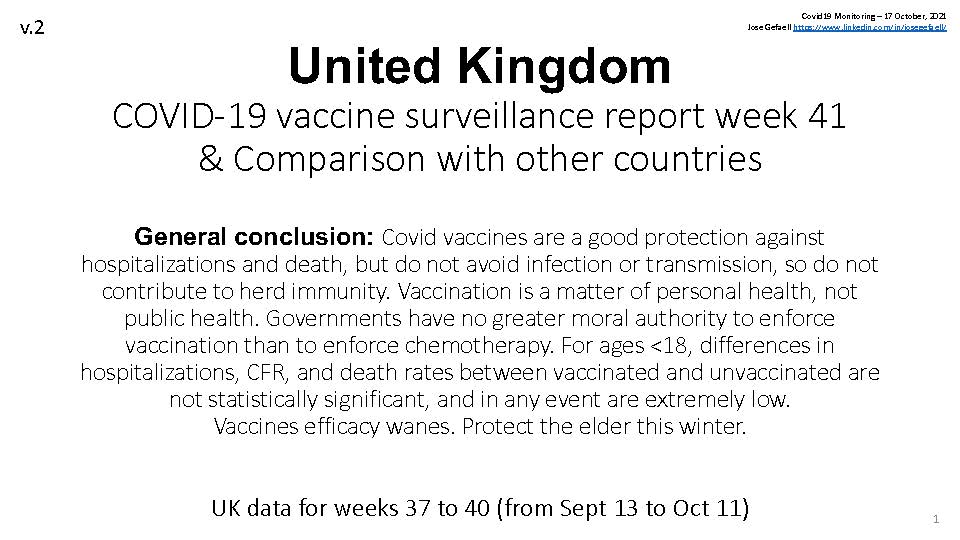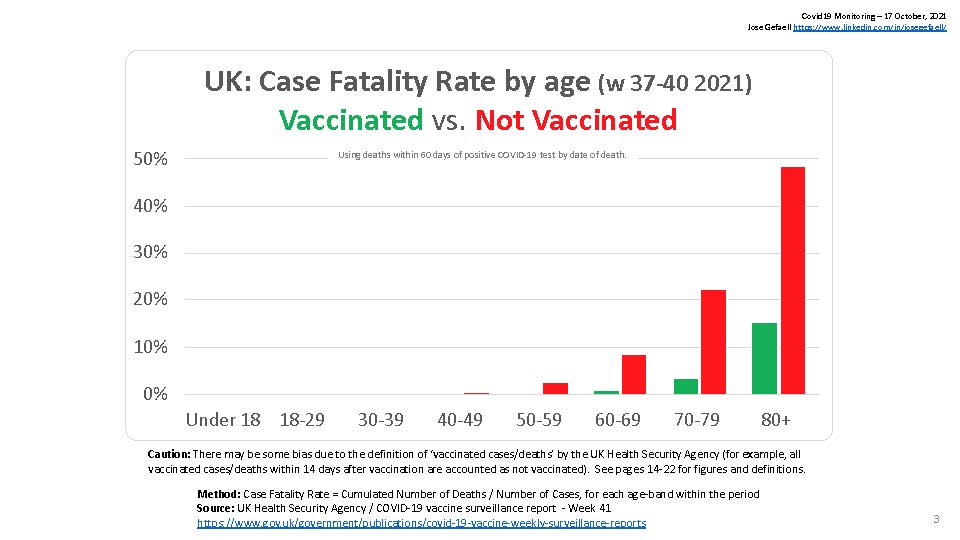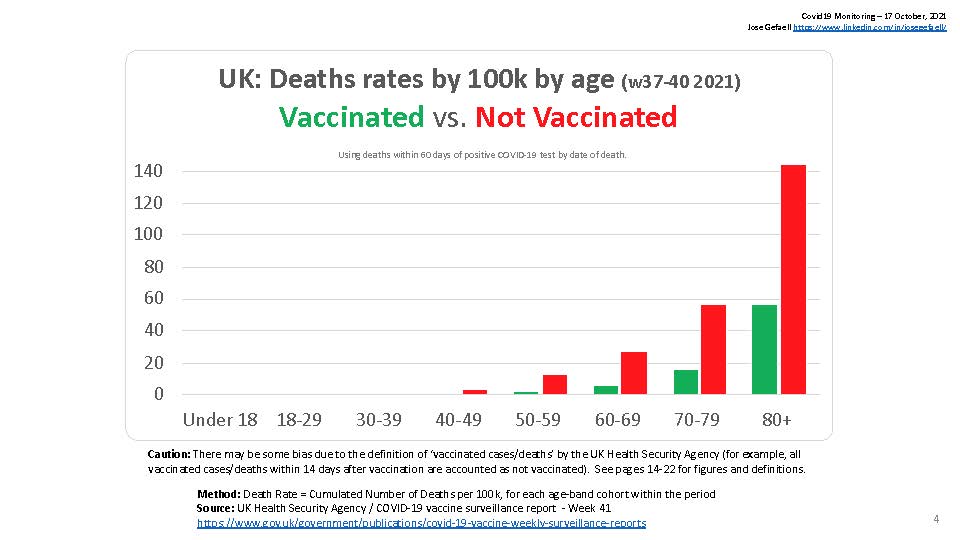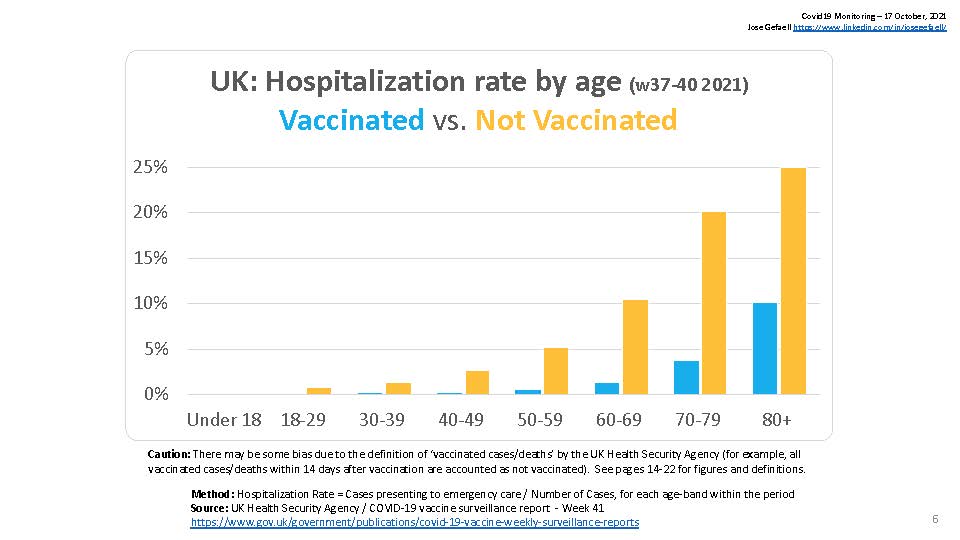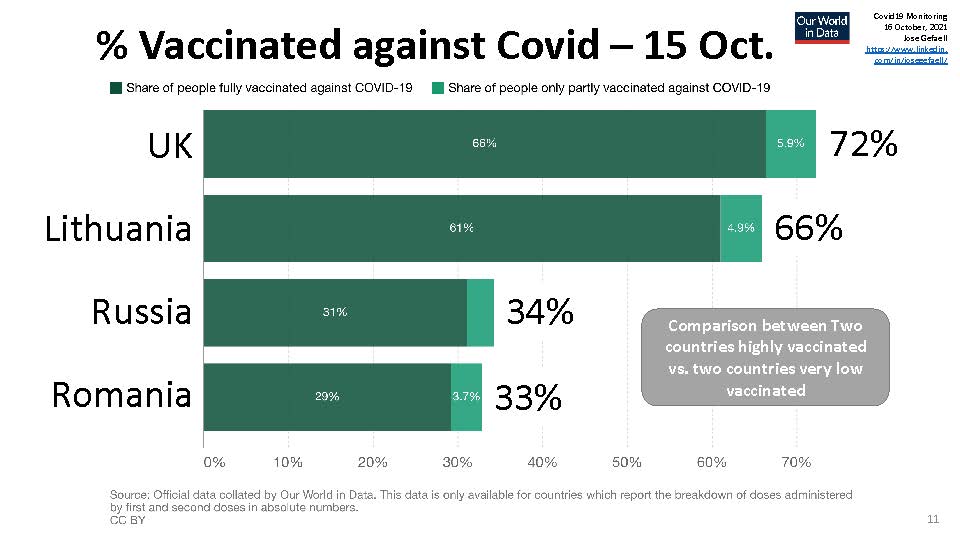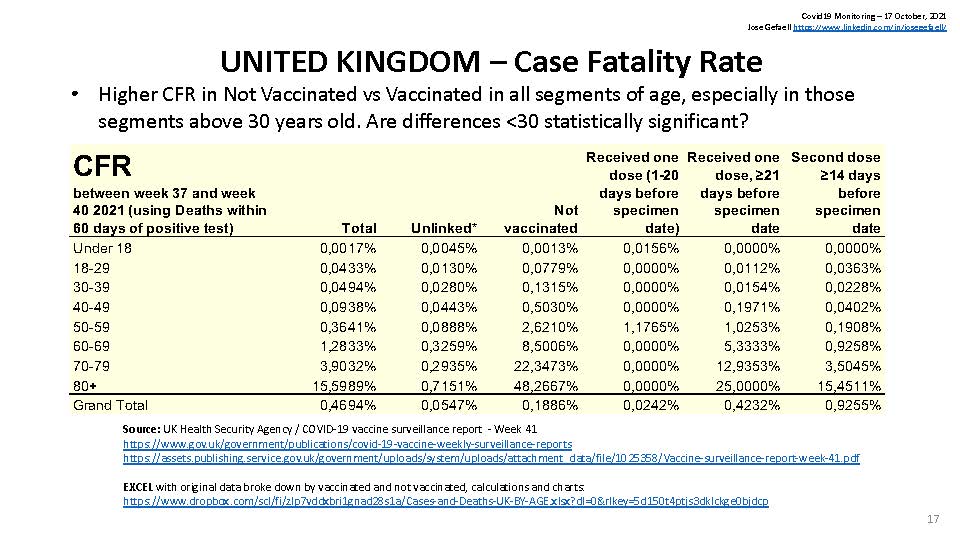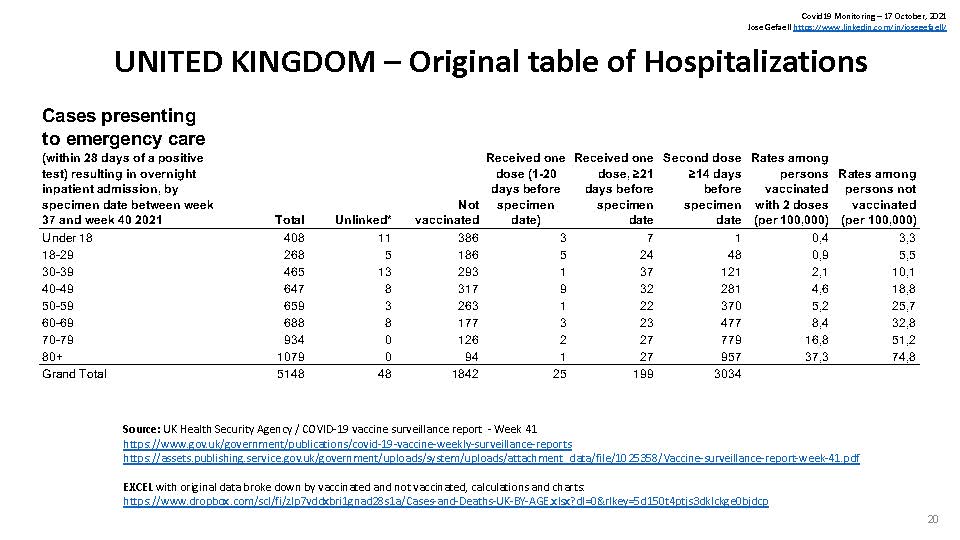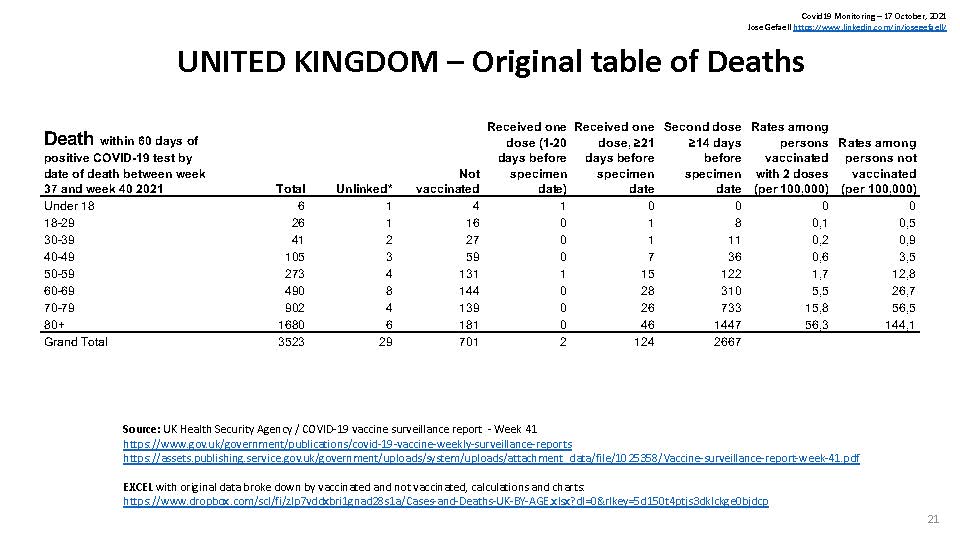This post is not about the safety, side effects and mortality with regard to. Covid vaccines but only about effectiveness. To report as up-to-date as possible, I look at the UK, where vaccinations started earlier. What is happening there now, we can also expect here. It Public Health England (PHE) weekly report for week 42 reaffirms trends that were predicted, that seemed to emerge quickly and that can no longer be denied. Jose Gefaell (@ChGefaeill) made informative slides of the most important points of weekly report 41, so last week. What is stated in his presentation about 41 applies to a greater extent to week 42 – all identified trends are being continued more strongly. My adaptation of his texts and his own click-through slides can be found below. The original PDF is here.
General conclusion: Covid vaccines are still good protection against hospitalizations and death, but can increase infection and transmission. So they do indirectly contribute to herd immunity, but only if people actually become ill after infection. Vaccination is a matter of personal health, not public health. Governments have no moral authority to enforce vaccination, any more than they have to impose chemotherapy.
For ages <18 years, the differences in hospitalizations, CFR, and death rates between vaccinated and unvaccinated are not statistically significant, and in any case extremely low. Every possible risk imposed on them is one too many. At what age that balance changes remains unclear as long as there is no insight into the side effects. The protective efficacy of vaccines against hospitalization and death still remains intact in the middle/older groups and probably in vulnerable young people.
Protect the elderly this winter.
Summary:
Number of cases
Absolute # of cases and infection rates (cases per 100k) below complete
Vaccinated are now higher than those of the unvaccinated at all ages ≥30. Both vaccinated and unvaccinated people become infected and spread the virus, but more so in those vaccinated ≥30 years of age.
Global Comparison by Country
McKinsey matrix suggests that there is no correlation between the percentage of the vaccinated population and the infection rate. It also seems that there is no correlation between the percentage of the vaccinated population and the "weekly growth" of cases.
Hospital admissions
Generally very low hospital admissions at a young age and very high in the elderly. Much higher hospitalizations in unvaccinated versus vaccinated in all age groups over 18 years of age. Differences in ages under 18 are not statistically significant.
Case Fatality Rate (CFR)
In het algemeen extreem lage CFR op jonge leeftijd en extreem hoog bij ouderen. Aanzienlijk hogere CFR bij niet-gevaccineerd versus gevaccineerd in alle leeftijden >30. Verschillen vaxxed/not-vaxxed in leeftijden onder de 30 lijken niet statistisch significant te zijn.
Caution
There may be some bias due to the UK Health Security Agency's definition of 'vaccinated cases/deaths'. For example, all vaccinated cases/deaths within 14 days of vaccination are considered unvaccinated. However, biased or not, the aforementioned conclusions can be maintained.

